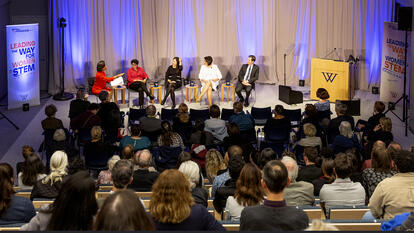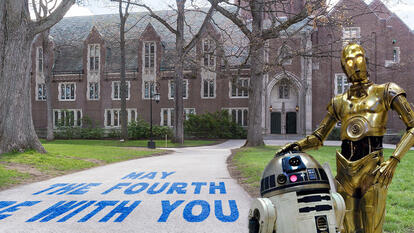From the Middle Ages to Modern-Day Philadelphia: How Black Metaphors Shape Our Understanding of Race

When Cord Whitaker, associate professor of English at Wellesley, looks at the South Philadelphia neighborhood in which he grew up, he says he sees the reach of a centuries-long global dichotomy: White is good; black is bad.
While many scholars and studies trace our modern understanding of race back to the rise and spread of slavery in the Americas, Whitaker argues that “the notion of an unsurmountable difference between black and white” actually has its roots as far back as the Middle Ages.
In his new book, Black Metaphors: How Modern Racism Emerged from Medieval Race-Thinking, Whitaker writes that “the black-and-white split that defines race in the modern West is the result of the Middle Ages—especially the Crusades’ insistence on the purity and innocence of Christians and the sinfulness and depravity of Muslims and other non-Christians.” Over time, Whitaker says, this became the white-is-good, black-is-bad split that informs everything from policing controversies to school resource allotment to community development projects—like one in Point Breeze, the Philadelphia neighborhood where Whitaker’s grandparents lived and raised their family for over 60 years.
Point Breeze has over the years shifted from a mainly white, immigrant community, to a predominately black one, to a more integrated community that is now undergoing rapid gentrification. Amid those changes, the community is working to preserve and improve Ralph Brooks Park, an iconic neighborhood gathering place, a process that Whitaker believes seeks to undo the dichotomy he chronicles in his book.
“It is a place that embodies efforts to do away with racism’s ugly legacies,” Whitaker said. “Violence—especially gun violence—is one such legacy, and Ralph Brooks became its victim in 1988 when, at 6 years old, he was shot and paralyzed for the rest of his life.” The park, dedicated in Brooks’ honor in 1989, is home to the famous “Stop the Violence” mural, which bears the names of children killed by gun violence; it was redesigned and rededicated this summer.
Whitaker and Connor Barwin, a former Philadelphia Eagles defensive end and the founder and president of the public space revitalization nonprofit Make The World Better, recently teamed up to host a fundraiser to benefit Ralph Brooks Park, and to celebrate Whitaker’s book and memorialize his late grandfather, known to Point Breeze residents as “Grandpa.”
Whitaker said combining Black Metaphors with an event that brought the Point Breeze community together to improve the park felt natural: “Black Metaphors offers activists and community organizers a new way to see race—as a rhetorical practice with historical roots that extend back well beyond the periods of Enlightenment science and American slavery to which it is often attached.”
It also offers a model for how to disrupt entrenched ways of thinking: the medieval rhetoricians featured in the book, according to Whitaker, “changed millenia-old ways of thinking about what makes a good metaphor. Their changes paved the way for the development of race, but learning from the dynamics of their intellectual revolution can teach us how to make changes that can do away with the racism they helped create.”
Photo: Wellesley College associate professor of English Cord Whitaker stands in front of public art in Philadelphia's Ralph Brooks Park in his hometown neighborhood of Point Breeze.



